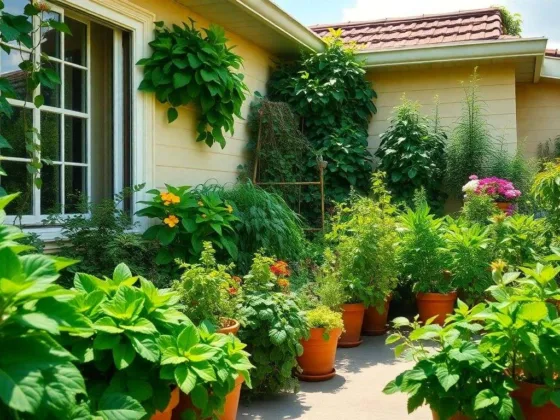Table of Contents Show
Growing Tiny Tim Tomatoes — We certainly enjoyed the quality as well as the quantity of tomatoes we had in our home garden. I started more tomato varieties than other years but due to a little trip, I made, across the yard, I damaged and lost my tray of Tiny Tim tomatoes. So I decided I would try my hand at growing Tiny Tim’s indoors through the winter.
Growing Tiny Tim Tomatoes Indoors in Winter
There’s just something that turns me off store-bought tomatoes during the winter, they seem so bland that I don’t care to eat them. I’m trusting my homegrown tomatoes will taste better than store-bought. We shouldn’t have to worry about our plant hardiness zone indoors, I hope. Our house is rather old and can be a little breezy on those cold blustery days.

The decision to go with Tiny Tim tomatoes is really just the size of the plant, at about 18″ tall at maturity. They will fit our south-facing windows along with our herb garden and space is at a premium so no huge tomato plants.
Needs For Growing Tiny Tim Tomatoes Indoors
We try to recycle so I am going to be using plastic yogurt containers to start our Tin Tim tomato seeds. I’ll be able to use them over and over and when it’s time to transplant the starter plant to a bigger container I am going to recycle more cardboard milk cartons.

Soil Mix For Starting Seeds
Previously I started an indoor herb garden which didn’t do well at first. The reason was the potting soil, perlite, and peat moss. There were clumps that didn’t let most of the seeds get through the soil.This time I sifted the peat moss to avoid clumps and anything that was fully composted which made for a much finer soil mix.

I like to add perlite and peat moss as they help to hold water in the soil and aerate it for stronger and healthier roots. Because the peat moss is so hard to rehydrate that I had to soak it and allow it sit for a while before I planted seeds.
Read The Instructions Guys
I’m a guy and tend not to ask for directions and I don’t usually read instructions until I’ve proved to myself I really don’t know what I’m doing. However, I want my tomatoes so before planting the seeds I turned the package over and read the package.
The instructions say to cover the seeds with 1/4″ or 6mm of soil.
I don’t pour water on the soil as it tends to wash the thin layer of soil off the seeds so instead, I prefer to use a spray bottle to lightly moisten the soil. Then I cover with plastic wrap to keep the evaporation low. It also allows me to see what’ going on with our seeds.
For best results keep the temperature at or slightly above 75F/24C. We don’t keep the heat high at night so we will most likely need to use a lamp to keep that temperature during the colder months of winter.
Note: Your pots won’t need direct sunlight at this time but once your seeds have sprouted they will need 6 to 8 hours of direct sunlight each day.
Must Read:
Getting The Best Lighting
We only have two windows that are south facing but one has trees that block the afternoon sun so I am really limited to one of our kitchen windows. It’s where I grow our herb garden and has limited space.
Watering Containers
It’s easy to over water containers so don’t just touch the surface and then water them. The surface dries quickly because of evaporation so stick your finger down into the soil, about an inch, to see if it’s still moist down there.
If it’s dry water and if it’s moist wait another day.
What I Use As Fertilizer
Last summer I used Miracle-Gro to help my tomato plants get a good start and they did, better than any year previously so I am using it again with my indoor tomatoes. I will give them a feeding of Miracle-Gro every couple of weeks.
What About Pollinating Tomato Plants
Tomato plants have everything they need to pollinate themselves on every plant. But when you grow them indoors you’re not likely to have the insects that usually do the pollinating. You are not likely to have a strong enough breeze to do the job either so a little fan is a good thing to have.
You can also pollinate your tomato plant by hand simply by vibrating the plant once the blossoms are fully open and ready. Some people have been using electric toothbrushes or electric shavers to give that vibration the bees wings or breeze provides.











1 comment
Did this work, growing them indoors in the winter?
I would like to try this but, although my kitchen window is almost directly south facing and I have double glazing, there is no central heating and it can get quite cold in there during the winter nights. Do you think it would be OK,.or should I invest in a propagator that is about 18″ tall? (if there is something like this available)